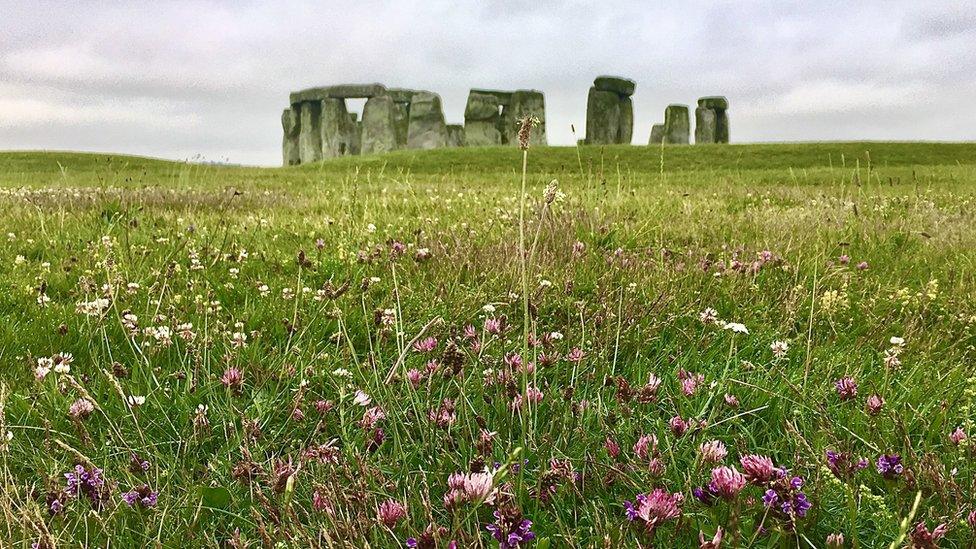New Cotswold wildflower grasslands to allow native species to return
- Published
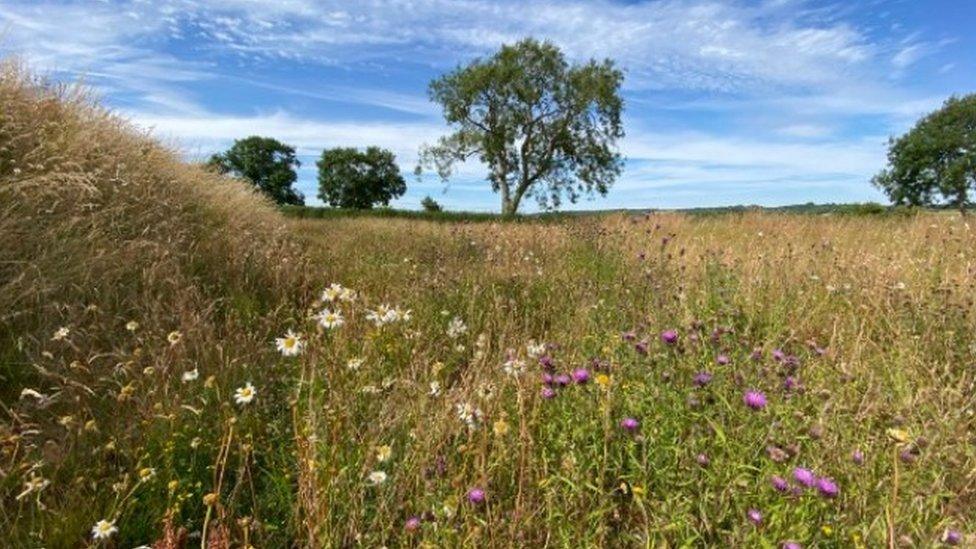
New wildflower grasslands are to be developed in the Cotswolds to allow native species to return to the area
New wildflower grasslands are to be developed in the Cotswolds to allow native species to return to the area.
Work has already started on more than 80 hectares of land.
Further funding by National Highways, external will now allow future sites to be identified for improvements over the next two years.
The grasslands will be managed through a combination of conservation grazing and hay-cuts to allow the wildflowers to establish and flourish.
The project is a partnership between Cotswolds National Landscape, external (CNL) and the National Trust, external (NT).
New habitats
The NT used part of a £2 million National Highways fund for the seeding and long-term maintenance of 50 hectares across nine sites in the Cotswolds, helping restore space for nature, abundant with wildflowers and insects.
Jonny Loose, general manager for the Cotswolds, said: "Home to blue butterflies, adders, skylarks and Greater Horseshoe bats, these new habitats will help reverse the decline in these species and keep these wonderful, buzzing meadows and grasslands full of life for generations to come."
"The involvement of local groups, volunteers and landholders has helped our projects to make huge strides in restoring grassland, supporting vulnerable species and creating new areas for wildlife."
CNL has carried out restoration work on over 30 hectares of land in partnership with six private landowners that started in Autumn 2023.
Andy Parsons, CNL chief executive, said: "Since the 1930s, wildflower-rich grassland in the Cotswolds National Landscape, a designated Area of Outstanding Natural Beauty, has dropped from 40% to just 1.5%, impacting the vast diversity of wildlife and wildflowers in the area.
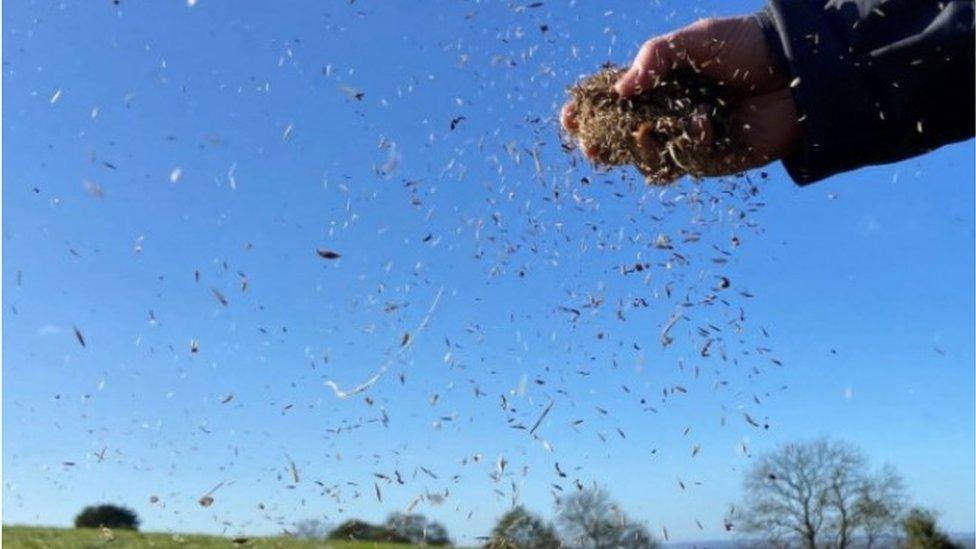
A combination of seeding, hay-cutting and conservation grazing will be used to kick-start the restoration process
"This funding from National Highways will allow us to amplify our work with potential plans for a further 90 hectares in the next two years."
Andy Chan, National Highways' project manager, said: "This project is a powerful reminder of how we can work collaboratively together and for our stakeholders and partners to deliver biodiversity projects that support and enhance the environment.
"It's great to be helping biodiversity across so many sites and be part of this ambition to protect unforgettable places forever."
A combination of seeding, hay-cutting and conservation grazing will be used to kick-start the restoration process.
This is followed by a light harrowing to create small spaces in the sward and seeding with special wildflower mixes.
The seed is harvested from wildflower-rich donor sites locally using brush harvesters.
National Highways' Designated Funds Programme has also allowed isolated populations of dormice to be reconnected alongside the M5 in Somerset, and the restoration of woodland, orchard, grassland and heathland bordering the A30 in Cornwall.

Follow BBC Gloucestershire on Facebook, external, X, external and Instagram, external. Send your story ideas to us on email, external or via WhatsApp on 0800 313 4630, external.
- Published13 November 2023
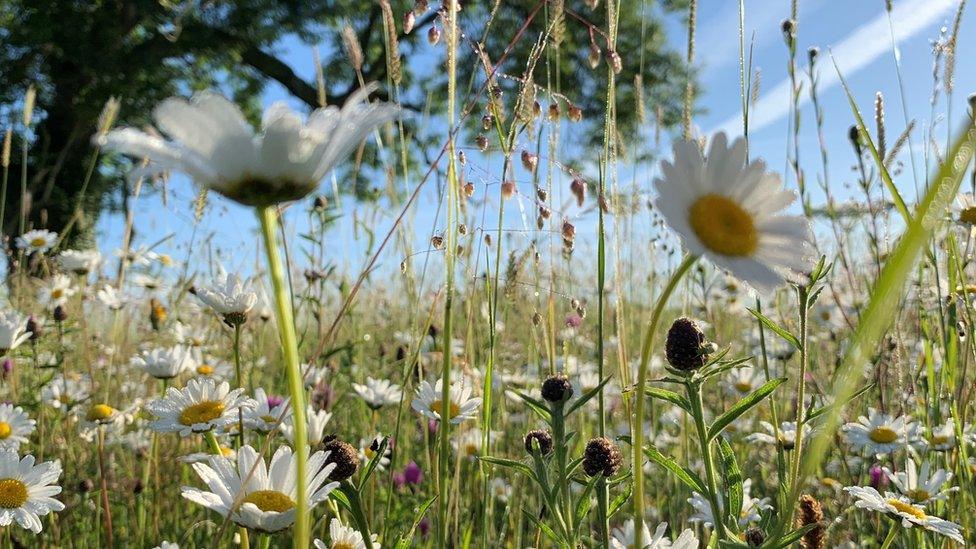
- Published24 September 2023
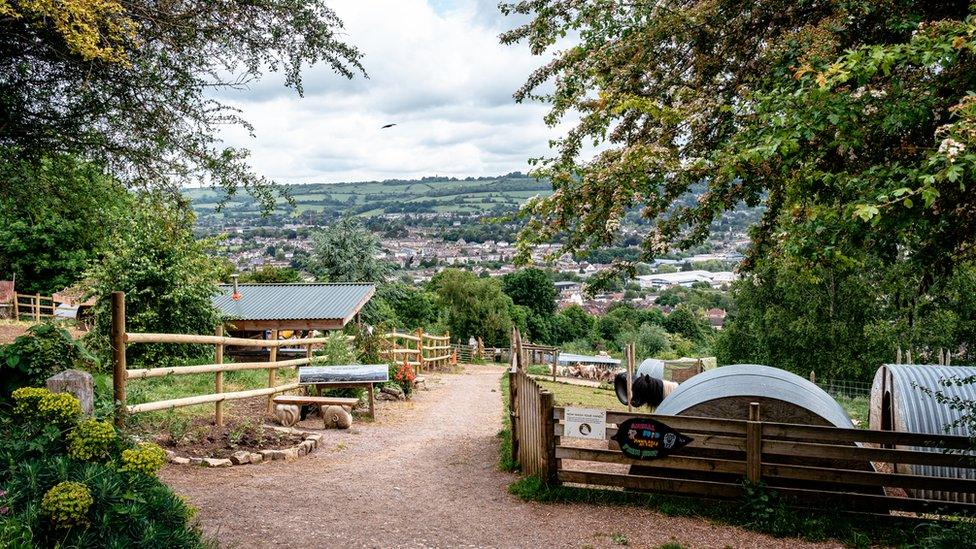
- Published31 March 2023
